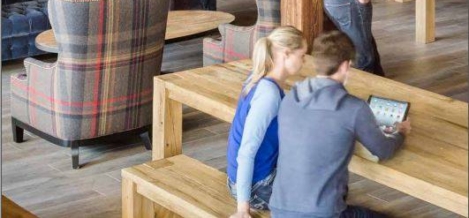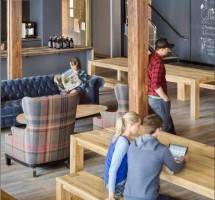August 30, 2016
Overwork leads to sleeplessness and lower workplace productivity 0
 A new study claims that there is a direct link between sleep and productivity. A survey of more than 97,000 employees in 33 industries and 139 countries from Global Corporate Challenge (GCC), found evidence of a link between sleep and performance. Currently, one in three adults regularly fail to get enough sleep, according to the US’ Centers for Disease Control and Prevention (CDC); and Harvard Medical School estimates that the cost adds up to USD $63.2 billion annually. This includes money lost through absenteeism as well as the accidents, mistakes, and impaired productivity employees suffer when they do show up to work. And the one of the primary causes is working long hours and forms of presenteeism such as checking emails at home. To help combat this problem the report urges those at the top of the organisation to set an example and demonstrate that working long hours in exchange for reduced sleep is counterproductive and won’t be encouraged.
A new study claims that there is a direct link between sleep and productivity. A survey of more than 97,000 employees in 33 industries and 139 countries from Global Corporate Challenge (GCC), found evidence of a link between sleep and performance. Currently, one in three adults regularly fail to get enough sleep, according to the US’ Centers for Disease Control and Prevention (CDC); and Harvard Medical School estimates that the cost adds up to USD $63.2 billion annually. This includes money lost through absenteeism as well as the accidents, mistakes, and impaired productivity employees suffer when they do show up to work. And the one of the primary causes is working long hours and forms of presenteeism such as checking emails at home. To help combat this problem the report urges those at the top of the organisation to set an example and demonstrate that working long hours in exchange for reduced sleep is counterproductive and won’t be encouraged.









 Fifteen million UK internet users have undertaken a ‘digital detox’ in a bid to strike a healthier balance between technology and life beyond the screen, according to a new Ofcom study. The study of around 2,500 people suggests that our reliance on the internet is affecting people’s personal and working lives, leading many to seek time away from the web to spend time with friends and family. Ofcom’s
Fifteen million UK internet users have undertaken a ‘digital detox’ in a bid to strike a healthier balance between technology and life beyond the screen, according to a new Ofcom study. The study of around 2,500 people suggests that our reliance on the internet is affecting people’s personal and working lives, leading many to seek time away from the web to spend time with friends and family. Ofcom’s 


 New research from AXA suggests that small firms are sceptical about the prospects of technologies such as 3D printing, robotics and driverless cars affecting their workplace in the near future. While more than 40 per cent of small businesses still don’t have a website, the study of 898 firms claims that most of these plan to move online in the next twelve months. If these plans are fulfilled, only seven per cent of UK businesses will remain offline by this time next year. However, just one in five plan to migrate to the Cloud and only six per cent say they expect to adopt smart technologies. Driverless cars, which are set to hit UK roads as early as 2020, have an equally low resonance, as just eight per cent of business owners expect they will travel in one. Businesses were also highly sceptical when it comes to 3D printing. Just two per cent of UK businesses who might use the process expect to see it used here ‘during their lifetimes’.
New research from AXA suggests that small firms are sceptical about the prospects of technologies such as 3D printing, robotics and driverless cars affecting their workplace in the near future. While more than 40 per cent of small businesses still don’t have a website, the study of 898 firms claims that most of these plan to move online in the next twelve months. If these plans are fulfilled, only seven per cent of UK businesses will remain offline by this time next year. However, just one in five plan to migrate to the Cloud and only six per cent say they expect to adopt smart technologies. Driverless cars, which are set to hit UK roads as early as 2020, have an equally low resonance, as just eight per cent of business owners expect they will travel in one. Businesses were also highly sceptical when it comes to 3D printing. Just two per cent of UK businesses who might use the process expect to see it used here ‘during their lifetimes’.
 The overwhelming majority of UK employees (81 percent) are working beyond their contracted hours, claims a report from recruitment firm
The overwhelming majority of UK employees (81 percent) are working beyond their contracted hours, claims a report from recruitment firm 
















May 25, 2016
An out of hours email ban and why we all need the ‘right to disconnect’ 0
by Adrian Lewis • Comment, Flexible working, Legal news, Work&Place, Workplace
(more…)